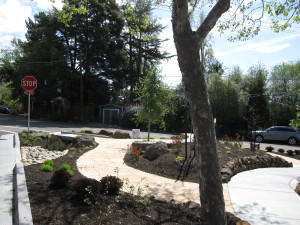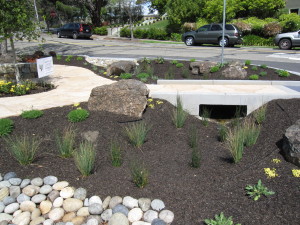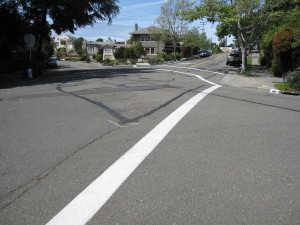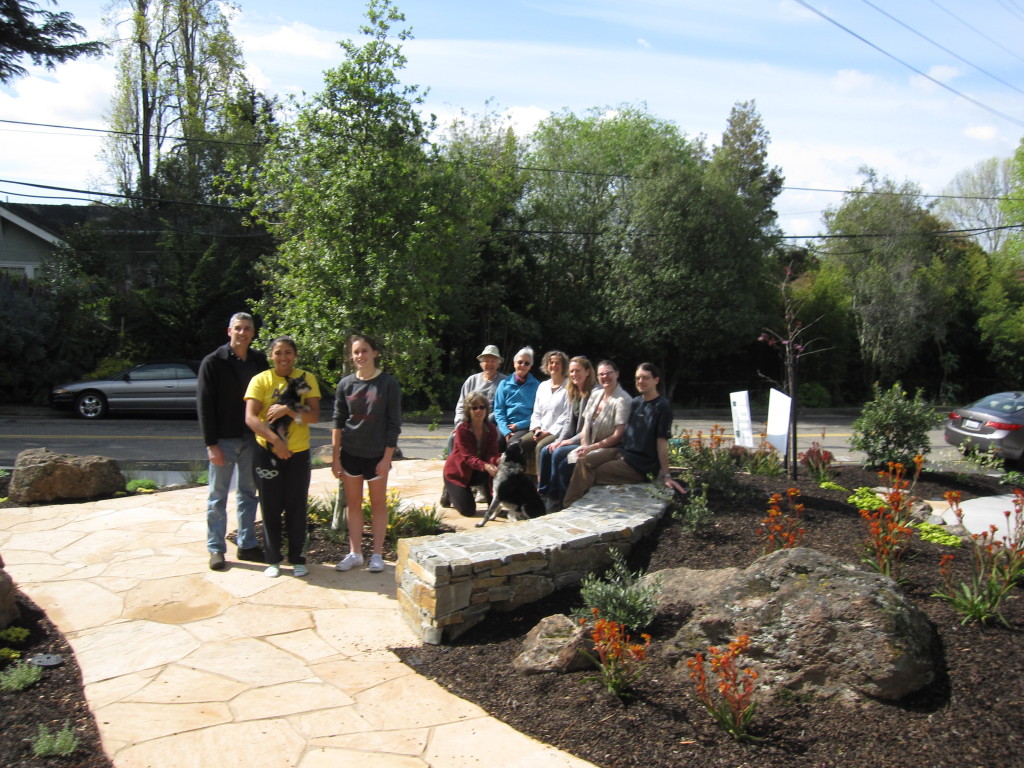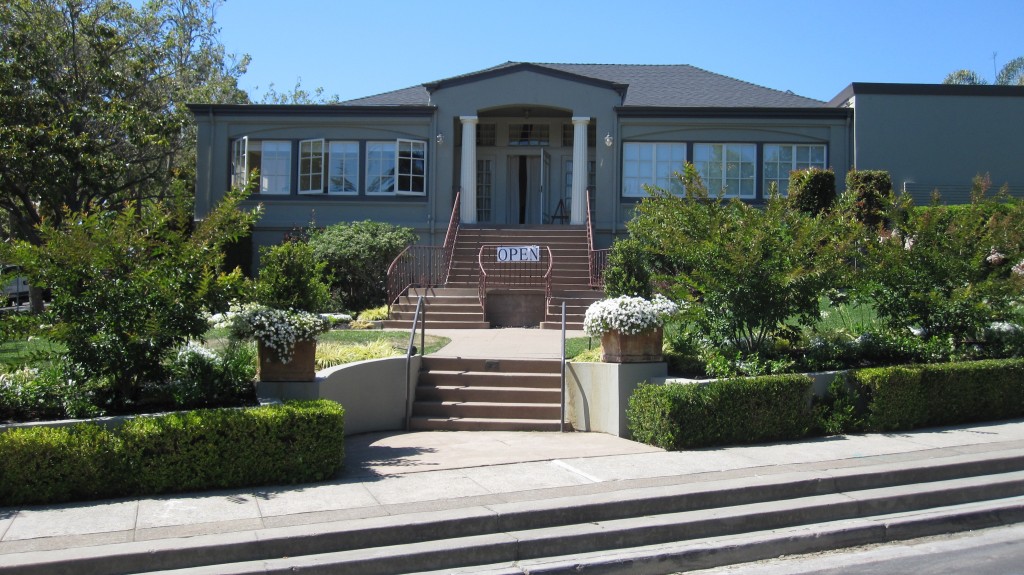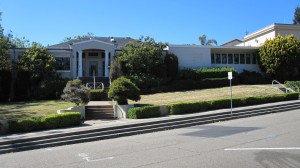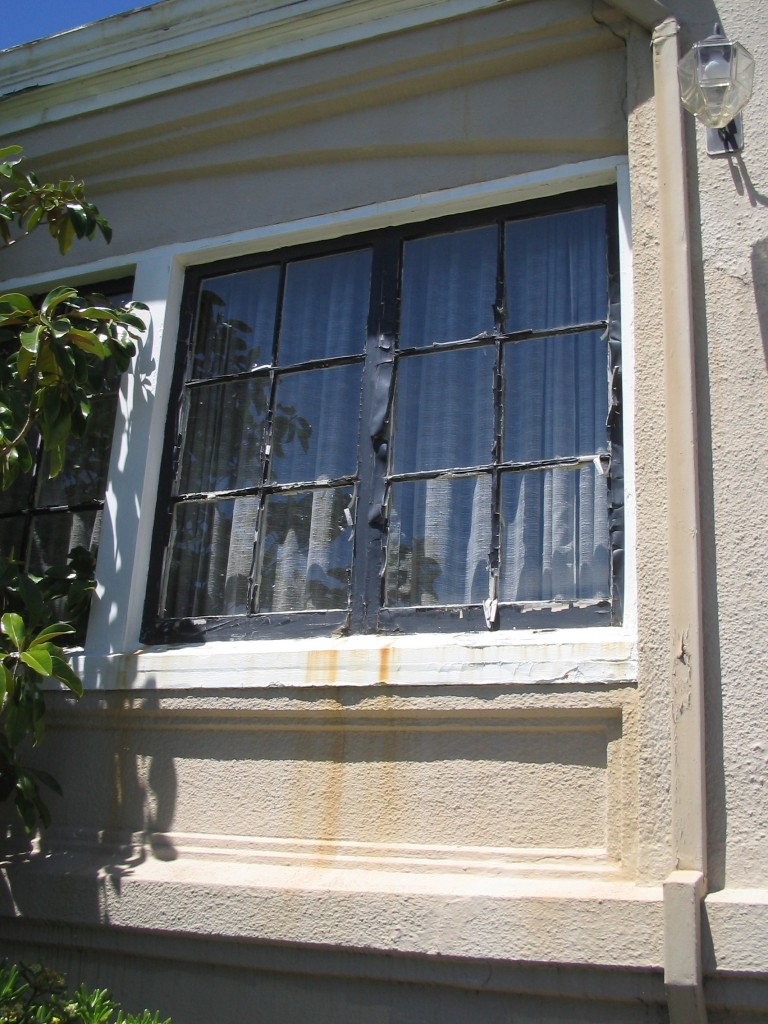Ramona Ronada Triangle Park Celebration April 10
Arbor Day Celebrated at Ramona/Ronada Triangle Project
The triangular pedestrian parklet at the intersection of Ramona and Ronada Avenues will be dedicated on Thursday, April 10 from 5:00 p.m. to 7:00 p.m. in celebration of Arbor Day. The celebration, open to the public, will feature speakers, tables, food, drinks, and music.
The project was initiated by Ramona and Ronada residents concerned about the safety of young children crossing the overly large intersection. Neighbors noted the lack of any crosswalks had been a problem for pedestrians and the excessive width attracted teenage daredevil teenage drivers, who spun their cars in “donuts”. Landscape architect Kimberly Moses developed a conceptual design that she and her neighbor Anne Marshall presented to the neighborhood and the Capital Improvements
Projects (CIP) Committee. All the neighbors contributed to a garage sale at the homes of Hedi and Paul Gerken and Sherrie and Mark Arrabit that raised $1200 for the project. Neighbors presented the project to City staff, the Beautification Foundation and advocated it to the City Council.
Over the years of neighborhood advocacy, the Gerkins were ever vigilant. When Public Works staff arrived one day and started chalking an island in the middle of the intersection, Paul Gerkin intercepted the crew and relocated them to paint the peninsula chosen by the neighborhood. It remained just a painted outline for several more years while City Councilmember Garrett Keating helped keep the project alive.
Finally, the project was funded, with $107,354 CIP Funds, $1200 from the Ramona and Ronada garage sale, and $30,000 from the Beautification Foundation for a total project budget of $138,554, including $10,000 project management and $11,687 (10%) contingency funds. Parks project manager Mark Feldkamp prepared the final park plan details for bidding.
On April 30, 2013 three bids for the construction were received, ranging from $116,870 to $151,032. The low bidder, Cleary Brothers Landscape, Inc, was awarded the contract by the City Council on May 20, 2013.
On January 21, 2014 the Piedmont City Council noted that Cleary Brothers’ construction was completed under budget. The neighbors continued to play a central role. Marshall and Moses together with Parks Commissioner Nancy Kent accompanied Feldkamp on the visit to the nursery to select Mediterranean plants, appropriate for Moses’ flow-through rain garden concept. Chester Nakahara, Director of Public Works, told the Council that the intersection improvement had reduced traffic speeds improving pedestrian safety.
Neighbors Mike Bott, Hedi and Paul Gerken, Anne Marshall, Jennifer Osgood, Jonathan Gerken, Kimberly Moses, Sherrie Jewett with Rue, Alisha Lewis with Rooney and Grace Sanford gathered in their parklet in advance of the dedication.


